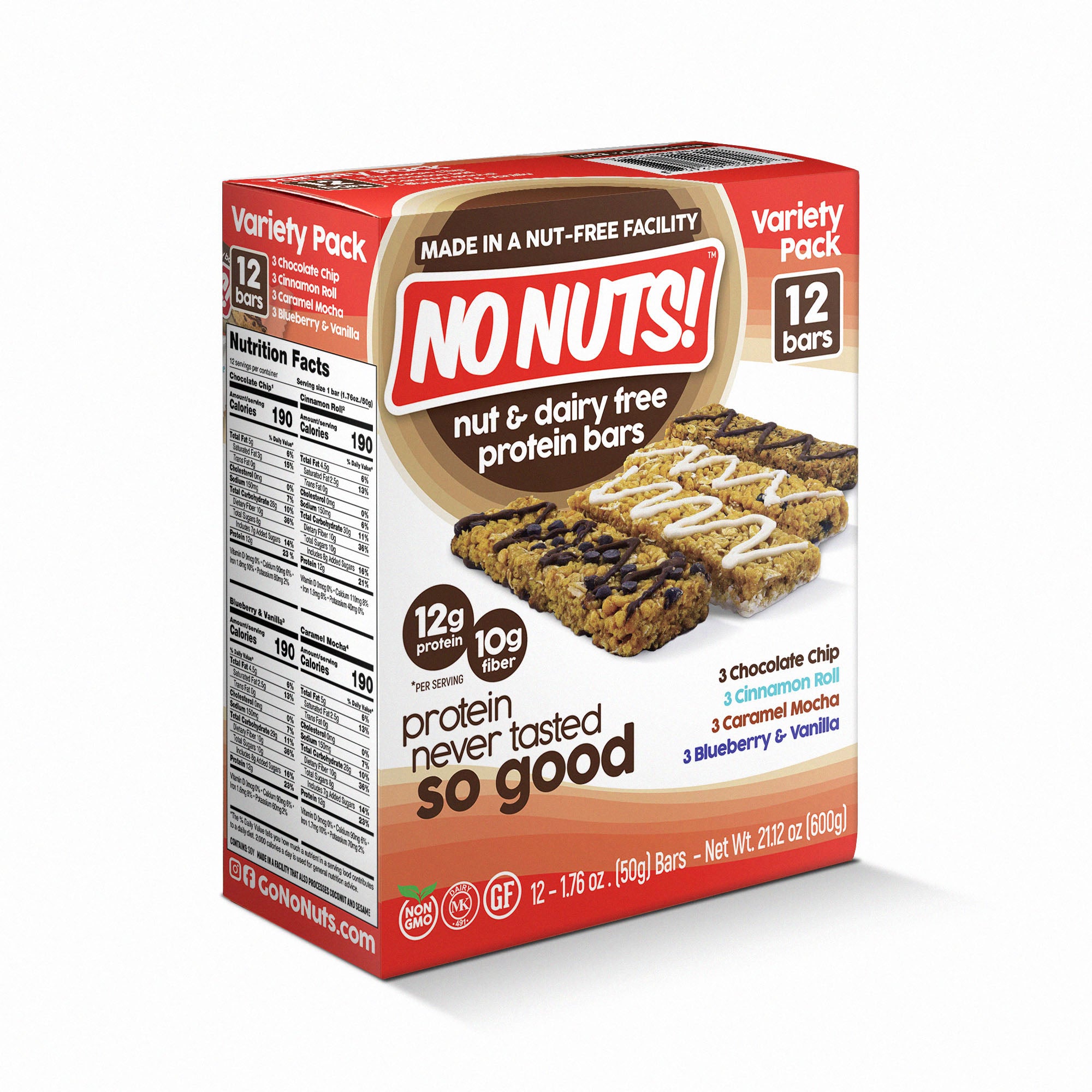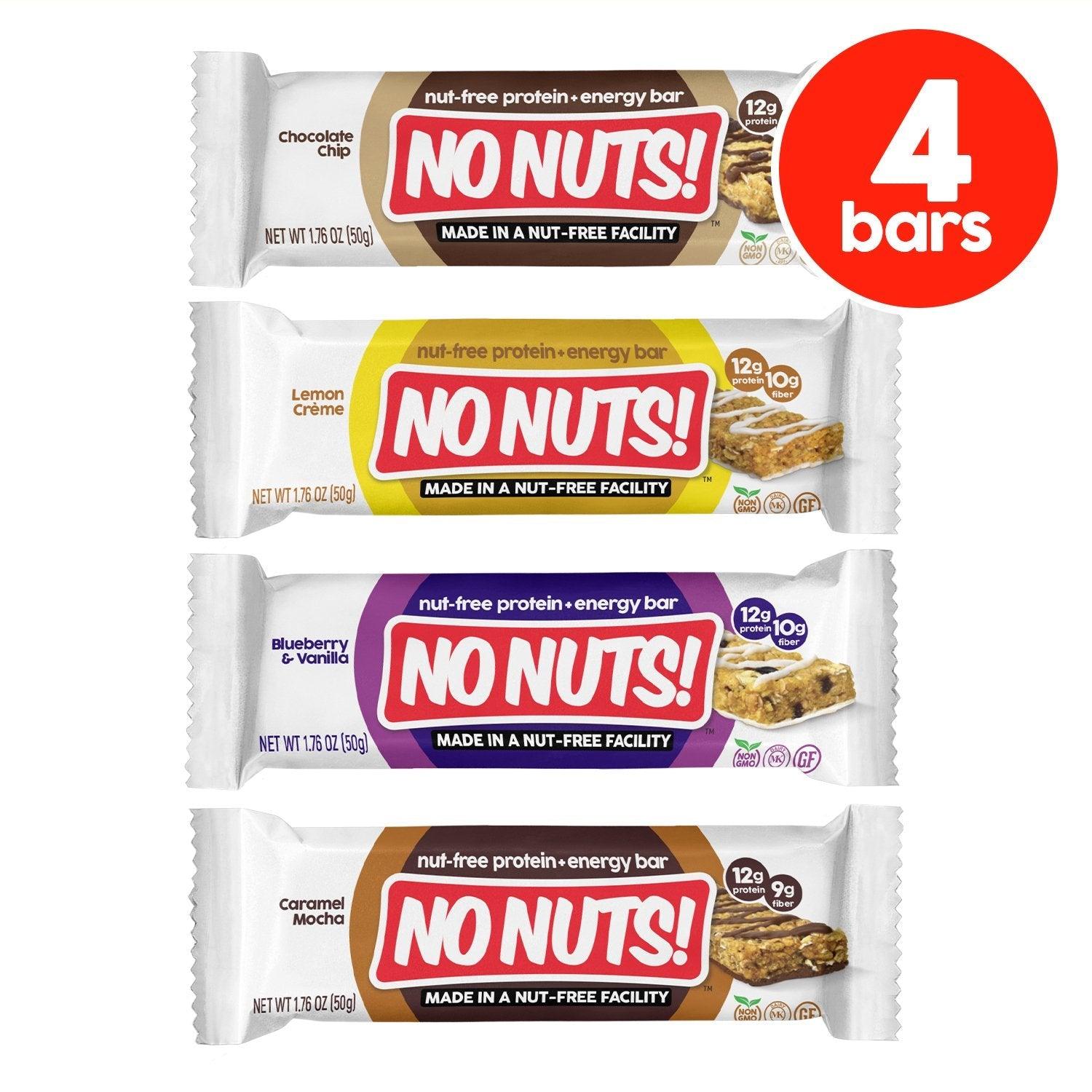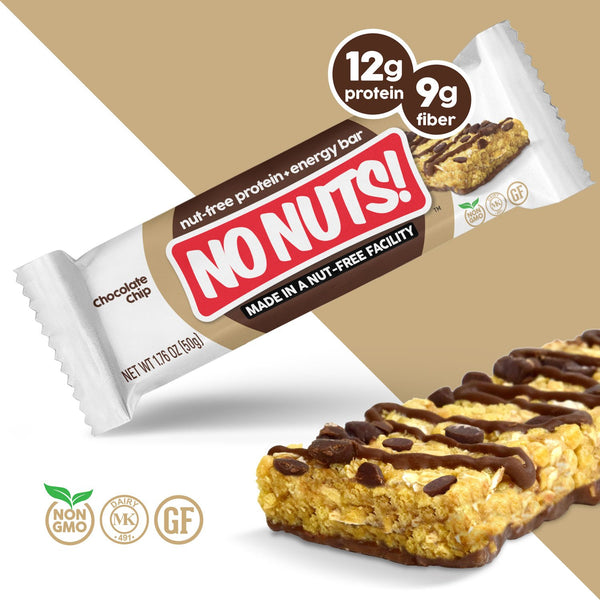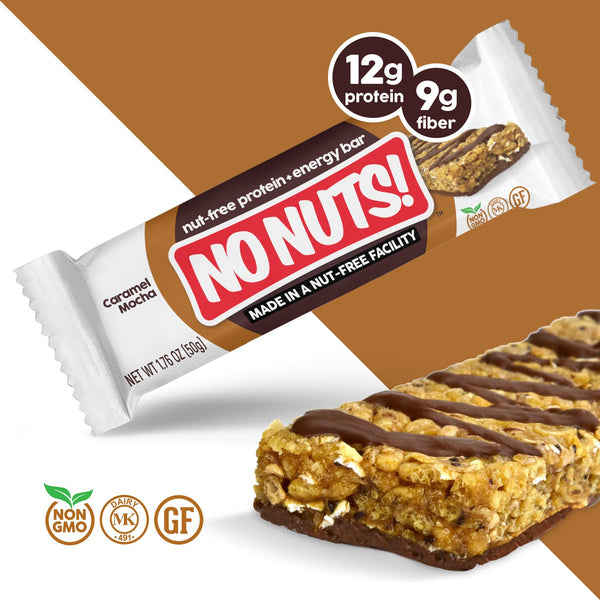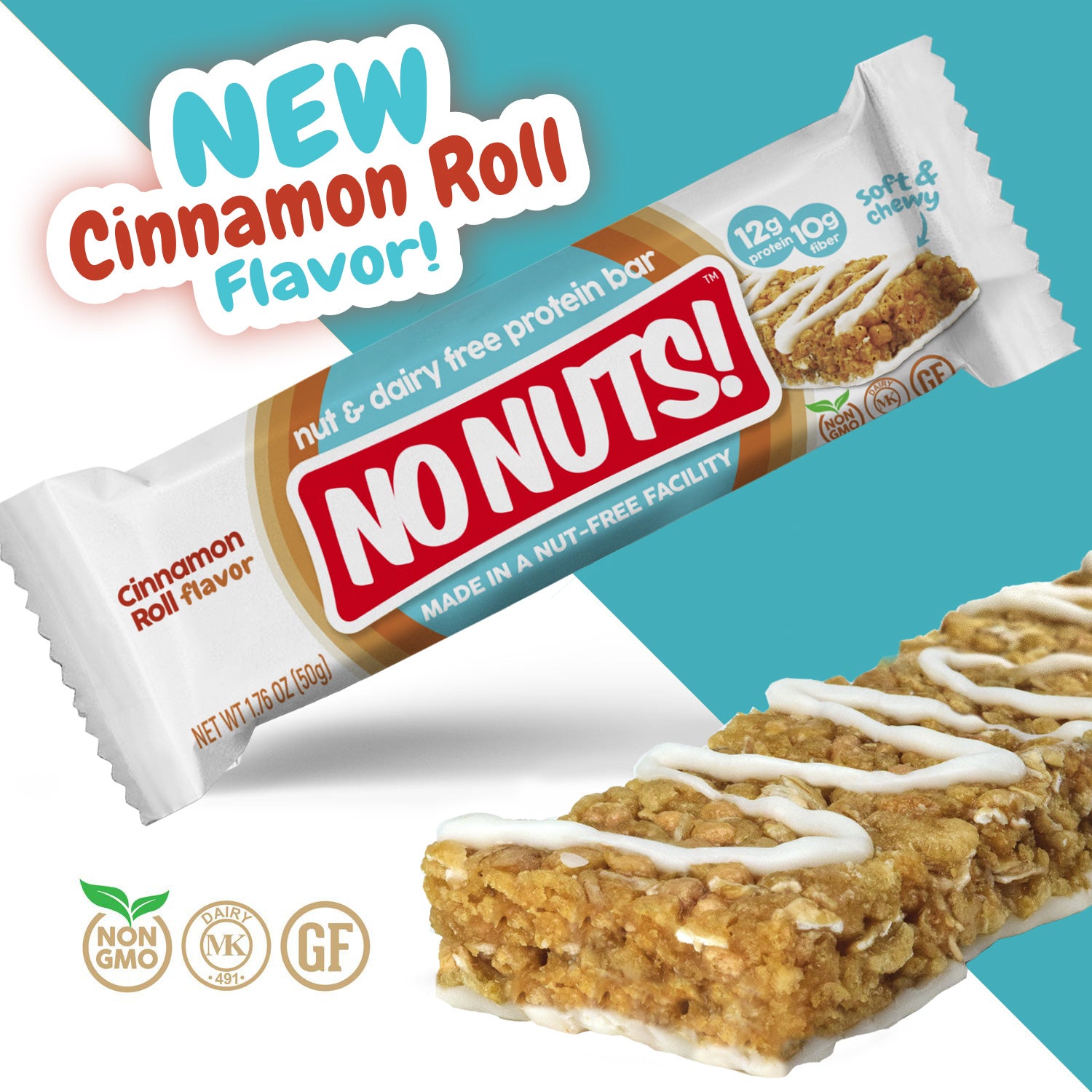Essential Tips for Maintaining a Nut-Free Kitchen
Jun 12, 2025
Creating a safe environment for those with nut allergies is important. At No Nuts!, we know how crucial it is to keep a nut-free kitchen. Let's look at 12 key tips to help you make your kitchen safe and tasty for everyone. These ideas will help reduce the risk of cross-contamination and give peace of mind to people with nut allergies and their families.
Key Steps for a Nut-Free Kitchen
- Clean thoroughly and regularly
- Use dedicated utensils and storage areas
- Read all labels carefully
- Educate family and guests
- Stock up on safe, nut-free snacks
1. Implement a Thorough Cleaning Protocol
Regular cleaning is key to preventing cross-contamination. Use hot, soapy water to clean all surfaces, utensils, and appliances. Even tiny amounts of nut residue can cause allergic reactions. Learn more about creating a nut-free environment in our guide. It's important to have a regular cleaning schedule and stick to it. This might include daily wipe-downs of countertops, weekly deep cleans of appliances, and monthly checks of less-used kitchen items.
Pro tip: Use separate cleaning supplies for nut-free areas to avoid spreading allergens. Color-coded cleaning tools can help you keep track of what's safe to use in your nut-free zones. For example, you could use green sponges and cloths for nut-free cleaning and red for areas that might have touched nuts. This system can be helpful in homes where not everyone has a nut allergy, making sure everyone is careful about keeping a safe environment.
2. Designate Nut-Free Zones and Storage Areas
Create specific areas in your kitchen for nut-free food prep and storage. This helps prevent accidentally mixing nut-containing and nut-free items. Use clear labels on shelves and containers to make it easy for everyone to identify safe zones. Consider using a special cabinet or pantry shelf just for nut-free products. In the fridge, you might use a specific drawer or section for nut-free items. This separation not only reduces the risk of cross-contamination but also makes it easier for everyone to quickly find safe foods.
Stock your nut-free zones with yummy, safe snacks like our No Nuts! variety packs and samplers. These tasty treats are great for worry-free snacking! Having nut-free snacks ready to go ensures there's always a safe option, reducing the temptation to eat potentially unsafe alternatives. It's also a good way to add variety to a nut-free diet, showing that avoiding nuts doesn't mean giving up on flavor or fun.
3. Read Labels Carefully
Always check ingredient labels, even on foods you've bought before. Companies can change recipes without telling you. Look out for hidden sources of nuts, like "natural flavors" or "spices." Our No Nuts! products, like the Lemon Creme bars shown above, always have clear, easy-to-read labels to help you make safe choices. It's important to know that nuts can be listed under different names, like almond extract, peanut oil, or cashew butter. Learn these different terms to make sure you're not accidentally bringing nut-containing products into your nut-free kitchen.
4. Invest in Dedicated Utensils and Cookware
Use separate cooking tools for nut-free meal prep. This includes cutting boards, knives, spatulas, and even pots and pans. Think about color-coding these items to make them easy to spot. For example, you could use green utensils for nut-free cooking and red for items that might have touched nuts. This system can be really helpful in homes where not everyone follows a nut-free diet. Also, have a special nut-free blender or food processor to prevent accidental contamination when making meals or snacks.
5. Educate Family Members and Guests
Make sure everyone in your home understands why keeping a nut-free kitchen is important. Teach kids about nut allergies and how to keep their friends safe. When guests come over, politely explain your nut-free policy. Check out our expert guide on managing nut allergies in children for more tips. Think about making a simple handout or picture that shows your kitchen's nut-free rules. This can help babysitters, family members, or anyone who might be cooking in your kitchen. Talking about nut allergies regularly with your family can help everyone remember how important it is to keep things safe.
6. Choose Nut-Free Alternatives for Common Ingredients
Many recipes call for nuts, but there are lots of tasty substitutes. Try seeds, like sunflower or pumpkin seeds, for crunch. Use seed butters instead of peanut butter. And for snacks, try No Nuts! products like our Chocolate Chip or Blueberry Vanilla bars. They're yummy and completely nut-free! Try different alternatives to see what works best in your favorite recipes. For example, coconut flakes can give a similar texture to chopped nuts in baked goods, while roasted chickpeas can give a nice crunch in savory dishes.
Check out our full range of nut-free snacks for safe and tasty alternatives to traditional nut-based treats. Having lots of nut-free options can help make switching to a nut-free lifestyle easier and more fun for everyone in the house.
7. Implement a "No Outside Food" Policy
To keep your nut-free kitchen truly safe, think about asking guests not to bring outside food into your home. This might seem strict, but it's the best way to control what comes into your kitchen. Instead, offer to provide snacks or meals for visitors. You can show off your yummy nut-free cooking skills! This rule can be especially important during holidays or special events when people often bring homemade dishes. Tell guests about this rule clearly when you invite them, and be ready to explain why it's important. You might want to make a list of safe, nut-free recipes that guests can make if they really want to bring something.
8. Create an Emergency Action Plan
Even with the best precautions, accidents can happen. Have a clear plan in case of an allergic reaction. Keep emergency medicines easy to find and make sure everyone knows where they are and how to use them. Put important phone numbers, like your doctor's and emergency services, in a visible spot. Think about writing down an emergency plan that shows what to do if there's an allergic reaction. This should include how to spot signs of an allergic reaction, how to give emergency medicine, and when to call for medical help. Review and update this plan regularly, and make sure all family members and frequent visitors know about it.
9. Be Careful When Dining Out or Ordering In
Eating out can be tricky with nut allergies. Always tell the restaurant staff about your allergy. Ask detailed questions about ingredients and how food is prepared. When in doubt, it's safer to choose simple dishes or bring your own nut-free snacks. Check out our guide to nut-free snacking on the go for more tips on staying safe while eating out. Think about calling restaurants ahead of time to talk about their allergy policies and menu options. Some places might be able to make special meals or give you more information about ingredients if you ask in advance. When ordering in, be sure to mention your nut allergy clearly and ask about cross-contamination risks in the kitchen.
10. Regularly Update Your Nut-Free Product Knowledge
The world of nut-free products is always changing. Stay informed about new safe options and potential risks. Follow nut-free blogs, join online groups, and keep up with the latest allergy research. This knowledge will help you make better choices for your nut-free kitchen. Set aside time now and then to look up new nut-free products and recipes. This can help prevent getting bored with your food choices and ensure that you know about the latest safe options available. Think about signing up for newsletters from trusted allergy organizations or following social media accounts about nut-free living for regular updates and tips.
11. Practice Safe Food Preparation Techniques
When cooking, always start with clean hands and surfaces. Prepare nut-free dishes first to avoid any chance of cross-contamination. If you're making both nut-containing and nut-free foods, use different utensils and preparation areas. Learn more about preparing safe, nut-free snacks for school in our guide. Consider making and storing nut-free meals separately from other foods. This might mean using specific countertops for nut-free prep or making nut-free meals on different days. When baking, be extra careful, as flour and other powdery ingredients can easily spread in the air and contaminate surfaces.
12. Stock Up on Safe, Delicious Nut-Free Snacks
Having safe snacks on hand is key to maintaining a nut-free kitchen. No Nuts! offers a variety of delicious, nut-free options like our Caramel Mocha and Cinnamon Roll bars. These treats are perfect for satisfying cravings without worry. Plus, they're great for packing in school lunches or taking on trips. By keeping a variety of nut-free snacks available, you can make sure that everyone in the house has access to safe, enjoyable treats all the time. This can be especially helpful in preventing feelings of missing out that sometimes come with dietary restrictions.
Discover our full range of delicious, nut-free snack options to keep your kitchen safe and satisfying for everyone. Regularly changing up your stock of nut-free snacks can help keep things interesting and exciting around nut-free eating, making it easier for everyone to stick to the nut-free policy.
Conclusion
Keeping a nut-free kitchen takes effort, but it's totally doable with these tips. Remember, it's all about creating a safe space where everyone can enjoy good food without worry. With careful planning, clear communication, and yummy nut-free alternatives like No Nuts! products, you can make your kitchen a welcoming place for all. By consistently using these strategies and staying informed about nut allergies and safe food options, you can create a positive, inclusive environment that puts safety and enjoyment first for everyone who comes into your kitchen.
By following these guidelines and stocking up on tasty, nut-free snacks, you'll create a kitchen that's safe, fun, and full of yummy treats for everyone to enjoy! Remember, maintaining a nut-free kitchen is an ongoing process that requires staying alert and committed, but the peace of mind and safety it provides are worth the effort.



